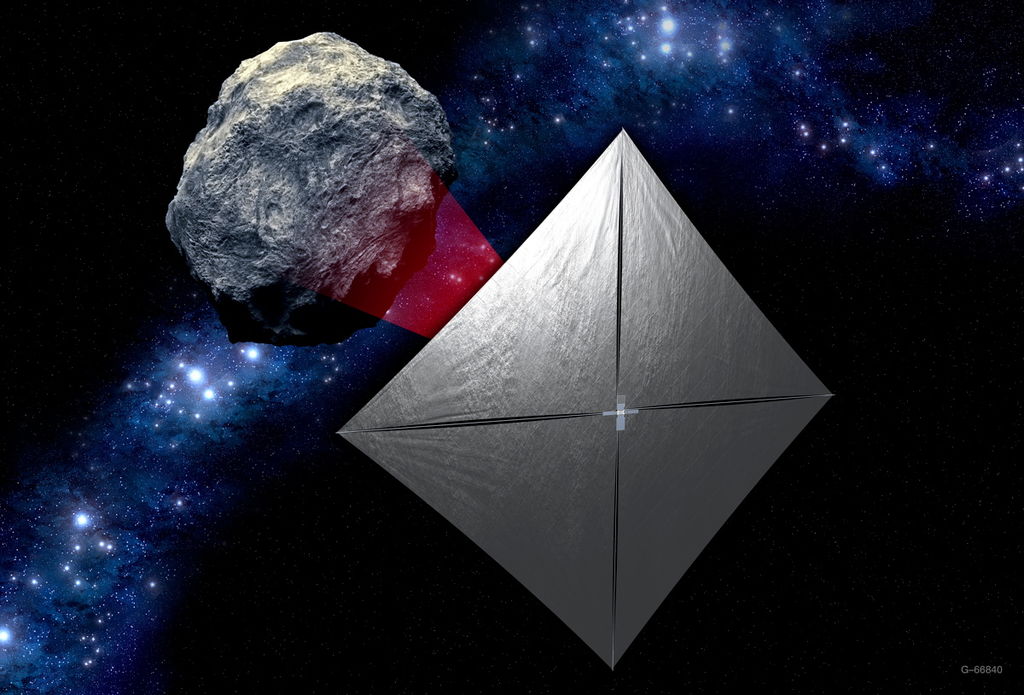BERLIN — If a large asteroid were headed for a direct hit with Earth, humanity probably couldn’t count on Bruce Willis and a nuclear bomb to save the world from certain doom, “Armageddon”-style.
That’s the possibility the European Space Agency (ESA) and NASA want to investigate with their Asteroid Impact and Deflection Assessment (AIDA) mission, proposed to launch in 2020. And Monday (Nov. 14), a group of planetary scientists and space experts released a letter here at Berlin’s Museum für Naturkunde to drum up support for the asteroid-nudging test run, just weeks before European officials will decide whether to go ahead with the mission. [Potentially Dangerous Asteroids (Images)]
Asteroid risk
Though scientists believe that big, Earth-threatening asteroids are relatively rare, the 2013 Chelyabinsk meteor strike offered a stark reminder that there could be potentially dangerous objects in Earth’s solar system that have yet to be discovered and studied. The space rock that exploded without any advance warning over the Russian city of Chelyabinsk was only about 65 feet (20 meters) wide, and yet the meteor injured 1,200 people and damaged thousands of buildings.
A bigger asteroid could wipe out a whole city, scientists have said.
“We know the approximate number of objects in the different size classes, but we know almost nothing about their characteristics,” Alan Harris, a senior scientist from the German Aerospace Center (known by its German acronym, DLR) told reporters at a press conference Monday. “To prepare for the deflection of an asteroid, we need to know much more.”
The letter that Harris and more than 100 other scientists signed noted that, of the thousands of known near-Earth objects, there are currently more than 1,700 asteroids considered potentially hazardous.
“Unlike other natural disasters, this is one we know how to predict and potentially prevent with early discovery,” the scientists wrote in the new letter. “As such, it is crucial to our knowledge and understanding of asteroids to determine whether a kinetic impactor is able to deflect the orbit of such a small body, in case Earth is threatened. This is what AIDA will help us assess.” [Three Ways to Deflect an Asteroid: Former Astronaut Explains (Video)]
Two missions, two space rocks
AIDA is really two missions: ESA’s Asteroid Impact Mission (AIM) and NASA’s Double Asteroid Redirection Test (DART). Both would fly to the binary asteroid system Didymos, which is set to pass within 6.8 million miles (11 million kilometers) of Earth in 2022.
This binary system consists of the 2,625-foot-wide (800 m) asteroid Didymos and its smaller “moonlet,” Didymoon, which, at just 560 feet (170 m) in diameter, is about same size as the Great Pyramid of Giza.
If the mission goes ahead as planned, the AIM spacecraft (which would be about the size of an office desk) will launch in October 2020 and arrive at Didymos in June 2022 to study the asteroid system and put a lander on Didymoon. AIM will also have a front-row seat to witness DART’s impact with Didymoon. When DART crashes, it will slightly adjust the orbit of Didymoon around Didymos, testing the type of technology that could one day be used knock a dangerous asteroid off its trajectory.
“We have never visited such a small body,” said AIDA/AIM principal investigator Patrick Michel, ofFrance’s Observatoire Côte d’Azur and the nation’s National Center for Scientific Research (CNRS), who was one of the scientists who drafted the letter.
Didymoon’s small size will indeed pose some challenges. For instance, scientists have hardly been able to characterize the moonlet from the ground.
“We don’t even know its shape,” Michel told Space.com.
And Didymoon’s gravity is minuscule. The object has an escape velocity of just 0.13 mph (0.21 km/h), meaning if you could stand on the surface of the asteroid and jump, you wouldn’t come back down to the surface of the space rock; you’d just float away, Michel said. Putting a lander on the surface of such a small body and getting it to stay there will be difficult, he added.
















